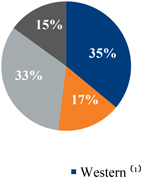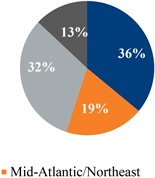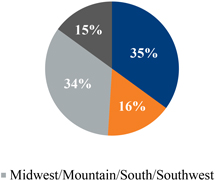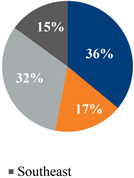Brokerage and Financing Services with the Subsidiaries of MMC
MMC has wholly or majority owned subsidiaries that buy and sell commercial real estate properties. The Company performs certain brokerage and financing services related to transactions of the subsidiaries of MMC. For the three months ended September 30, 2018 and 2017, the Company earned real estate brokerage commissions and financing fees of $1.8 million and $309,000, respectively, from transactions with subsidiaries of MMC related to these services. The Company incurred cost of services of $1.1 million and $181,000, respectively, related to these revenues. For the nine months ended September 30, 2018 and 2017, the Company earned real estate brokerage commissions and financing fees of $4.9 million and $632,000, respectively, from subsidiaries of MMC related to these services. The Company incurred cost of services of $2.9 million and $368,000, respectively, related to these revenues.
Operating Lease with MMC
The Company has an operating lease with MMC for a single-story office building located in Palo Alto, California, which expires on May 31, 2022. Rent expense for this lease aggregated $257,000 and $253,000 for the three months ended September 30, 2018 and 2017 respectively. Rent expense for this lease aggregated $765,000 and 759,000 for the nine months ended September 30, 2018 and 2017 respectively. Rent expense is included in selling, general and administrative expense in the accompanying condensed consolidated statements of net and comprehensive income.
Accounts Payable and Other Liabilities with MMC
For each of the periods ended September 30, 2018 and December 31, 2017, accounts payable and other liabilities with MMC totaling $91,000 remain unpaid and are included in accounts payable and other liabilities in the accompanying condensed consolidated balance sheets.
Other
The Company makes advances tonon-executive employees fromtime-to-time. At September 30, 2018 and December 31, 2017, the aggregate principal amount for employee notes receivable was $323,000 and $621,000, respectively, which is included in other assets (current andnon-current), in the accompanying condensed consolidated balance sheets. See Note 5 – “Selected Balance Sheet Data” for additional information.
As of September 30, 2018, George M. Marcus, the Company’s founder andCo-Chairman, beneficially owned approximately 42% of the Company’s issued and outstanding common stock, including shares owned by Phoenix Investments Holdings, LLC and the Marcus Family Foundation II.
| 9. | Fair Value Measurements |
U.S. GAAP defines the fair value of a financial instrument as the amount that would be received from the sale of an asset in an orderly transaction between market participants at the measurement date. The Company is responsible for the determination of the value of the investment carried at fair value and the supporting methodologies and assumptions. The Company uses various pricing sources and third parties to validate the values utilized.
The degree of judgment used in measuring the fair value of financial instruments is generally inversely correlated with the level of observable valuation inputs. Financial instruments with quoted prices in active markets generally have more pricing observability and less judgment is used in measuring fair value. Financial instruments for which no quoted prices are available have less observability and are measured at fair value using valuation models or other pricing techniques that require more judgment.
Assets recorded at fair value are measured and classified in accordance with a fair value hierarchy consisting of the three “levels” based on the observability of inputs available in the marketplace used to measure the fair values as discussed below:
Level 1: Unadjusted quoted prices in active markets that are accessible at the measurement date for identical, unrestricted assets or liabilities;
Level 2: Quoted prices in markets that are not active, or inputs which are observable, either directly or indirectly, for substantially the full term of the asset or liability; or
Level 3: Inputs reflect management’s best estimate of what market participants would use in pricing the asset or liability at the measurement date. Consideration is given to the risk inherent in the valuation technique and the risk inherent in the inputs to the model.
18



